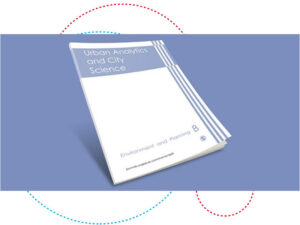Congratulations to Prof Geoffrey Caruso and Ass-Prof Dr Rémy Lemoy who have been awarded the Michael Breheny Prize for their paper “Evidence for the homothetic scaling of urban forms” published in 2020.
The Prize is awarded annually for the most innovative paper in the journal Environment and Planning B: Urban Analytics and City Science during the preceding year. The paper is chosen by the editors of the journal, this year by Michael Batty, Daniel Arribas-Bel, Seraphim Alvanides, Andrew Crooks, Linda See and Levi Wolf, who agreed that the best paper published in 2020 be awarded to Rémi Lemoy and Geoffrey Caruso.
More information about the paper:Rémy Lemoy & Geoffrey Caruso (2018): ‘Evidence for the homothetic scaling of urban forms’ Environment and Planning B: Urban Analytics and City Science, Vol. 47(5), 870–888, https://doi.org/10.1177/2399808318810532
Geoffrey Caruso is a Professor at the University of Luxembourg and holds the Luxembourg Institute of Socio-Economic Research (LISER) chair in Urban Analysis and Modelling. Before he was Associate Professor in GIS and spatial analysis at the University of Luxembourg, research associate at CORE in Louvain-la-Neuve (BE), at the Martin Centre at the University of Cambridge (UK), and Research Assistant in Geography at the Université catholique de Louvain (BE). His research is devoted to understanding spatial patterns and dynamics with specific foci on urban forms and residential choice, their impact on transport and the environment, the role of green space, and the integration of geosimulation and urban economics.
Rémi Lemoy is an Associate Professor of geography at the University of Rouen (France). He is a physicist by training, holds a PhD in economics and performed this work as a postdoc researcher in geography at the University of Luxembourg, at the Department of Geography and Spatial Planning. He studies cities and systems of cities in the face of current environmental and social challenges, with different quantitative tools, among which statistical analysis of large empirical datasets, analytical approaches coming from statistical physics and urban economics, and agent-based simulations. He also worked on statistical inference, inverse problems and computer complexity theory.
